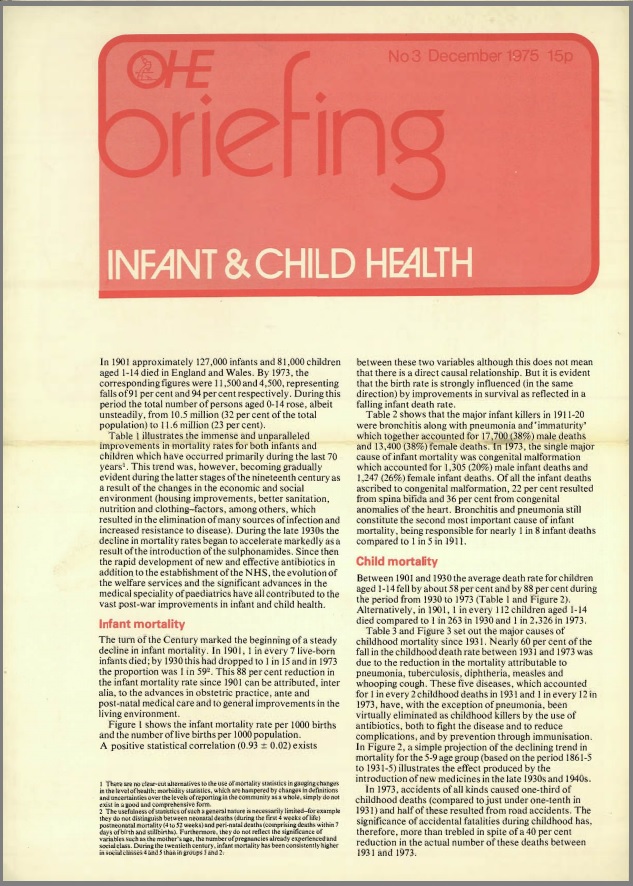Sign up to our newsletter Subscribe
Altering the Trajectory of HIV in Europe

In 1901 approximately 127,000 infants and 81,000 children aged 1-14 died in England and Wales. By 1973, the corresponding figures were 11,500 and 4,500, representing falls of 91 per cent and 94 per cent respectively. During this period the total number…
In 1901 approximately 127,000 infants and 81,000 children aged 1-14 died in England and Wales. By 1973, the corresponding figures were 11,500 and 4,500, representing falls of 91 per cent and 94 per cent respectively. During this period the total number of persons aged 0-14 rose, albeit unsteadily, from 10.5 million (32 per cent of the total population) to 11.6 million (23 per cent).
Table 1 illustrates the immense and unparalleled improvements in mortality rates for both infants and children which have occurred primarily during the last 70 years1. This trend was, however, becoming gradually evident during the latter stages of the nineteenth century as a result of the changes in the economic and social environment (housing improvements, better sanitation, nutrition and clothing-factors, among others, which resulted in the elimination of many sources of infection and increased resistance to disease). During the late 1930s the decline in mortality rates began to accelerate markedly as a result of the introduction of the sulphonamides. Since then the rapid development of new and effective antibiotics in addition to the establishment of the NHS, the evolution of the welfare services and the significant advances in the medical speciality of paediatrics have all contributed to the vast post-war improvements in infant and child health.
Infant and Child Health
